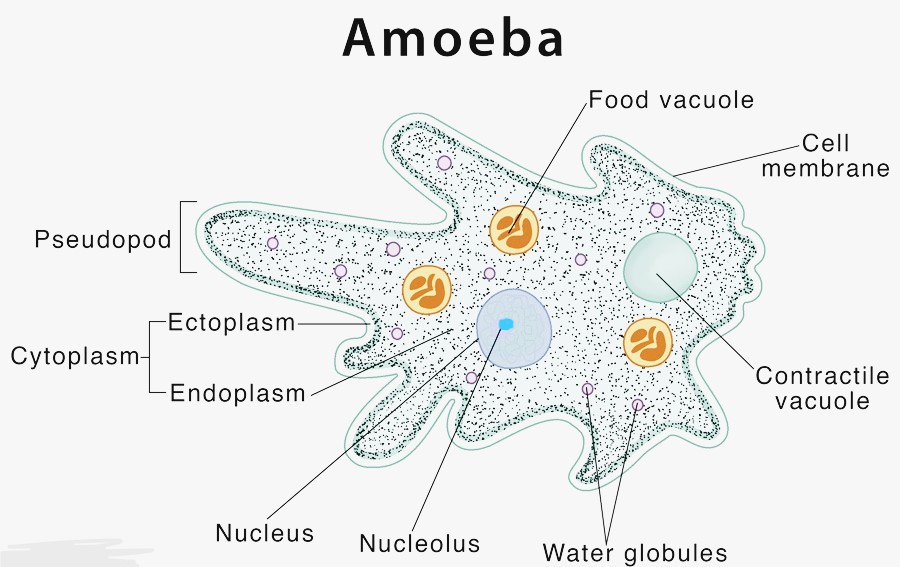Amoeba are single-celled organisms that belong to the phylum Protozoa. Amoeba can thrive in various environments, ranging from freshwater to marine habitats. Amoeba have the characteristic to move and feed through the use of Pseudopods. Pseudopods are finger-like projections of their Cytoplasm. Amoebas are Heterotrophic that means they feed on other organisms for energy. Amoeba reproduce asexually by Binary Fission, in which the cell divides into two identical daughter cells. Some species of Amoebas are pathogenic and can cause illness in humans and other animals.
Table of Contents
Amoeba Diagram

Explanation of each Labels of Amoeba Diagram
- Amoeba- An Amoeba is a single-celled organism that belongs to the phylum Protozoa. It is a type of unicellular protist that can be found in a variety of environments, including freshwater, marine and soil habitats.
- Food Vacuole– A food vacuole is a small, temporary compartment within the Cytoplasm of an Amoeba that contains ingested food particles. These particles are broken down by digestive enzymes and the resulting nutrients are absorbed into the Cytoplasm for energy.
- Nucleolus- The nucleolus is a small, round structure within the nucleus of the Amoeba. It is responsible for the synthesis of ribosomal RNA (rRNA) that is necessary for the production of ribosomes.
- Water globules- Amoebas regulate their water content using specialised organelles called contractile vacuoles, which pump excess water out of the cell. Water globules may refer to these contractile vacuoles.
- Pseudopod– Amoebas move and feed by extending finger-like projections of their Cytoplasm called Pseudopods. These Pseudopods can be extended in any direction, allowing the Amoeba to move in a highly flexible manner.
- Cytoplasm- The Cytoplasm is the gel-like substance that fills the interior of the Amoeba. It contains all of the organelles and structures necessary for the cell to carry out its functions.
- Ectoplasm- The ectoplasm is the outermost layer of the Cytoplasm. It is denser and more rigid than the endoplasm and helps to maintain the cell’s shape.
- Endoplasm- The endoplasm is the inner layer of the Cytoplasm. It is more fluid and contains all of the organelles necessary for the cell’s metabolic processes.
- Nucleus- The nucleus is the control centre of the Amoeba. It contains the cell’s DNA, which is organised into chromosomes. The nucleus also regulates the cell’s activities by controlling the expression of genes.
Also Check – How Amoeba Acquires its Food through the Process of Phagocytosis
Also Check – Nutrition in Amoeba
ALso Check – Endocytosis -Definition, Mechanism, Types, Examples

One Comment on “Amoeba Diagram for Class 7”